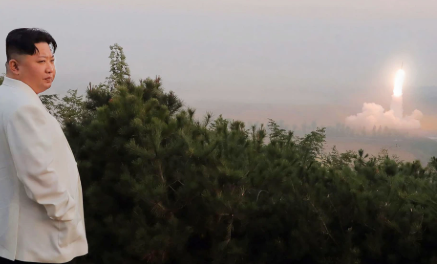
May 8, North Korea: North Korean leader Kim Jong Un himself oversaw a series of missile tests simulating nuclear counterstrikes against U.S. and South Korean forces. These drills, involving short-range ballistic missiles and 600mm multiple rocket launchers, were conducted near the eastern port city of Wonsan. South Korea’s Joint Chiefs of Staff reported that the missiles traveled up to 800 kilometers before landing in the Sea of Japan.
North Korea’s media stated that the exercises aimed to enhance the operational readiness of units under the country’s nuclear command structure. The tests included systems modeled after Russia’s Iskander missiles, highlighting Pyongyang’s efforts to diversify its tactical nuclear arsenal.
South Korean officials suggested that the launches might also serve as performance tests for weapons intended for export, particularly to Russia, amid its ongoing conflict in Ukraine. Intelligence reports indicate that North Korea has supplied Russia with artillery systems, ballistic missiles, and other military equipment.
In response to the launches, South Korea’s military emphasized its commitment to maintaining a strong defense posture in coordination with U.S. forces. The United States and Japan were also notified of the missile activity, with Japan confirming that no missiles breached its exclusive economic zone.
These developments underscore the escalating military cooperation between North Korea and Russia, raising concerns about regional stability and the proliferation of advanced weaponry. Analysts warn that North Korea’s continued missile tests and arms exports could further complicate diplomatic efforts aimed at denuclearization and peace on the Korean Peninsula. Keep reading Questiqa.com for more news.




